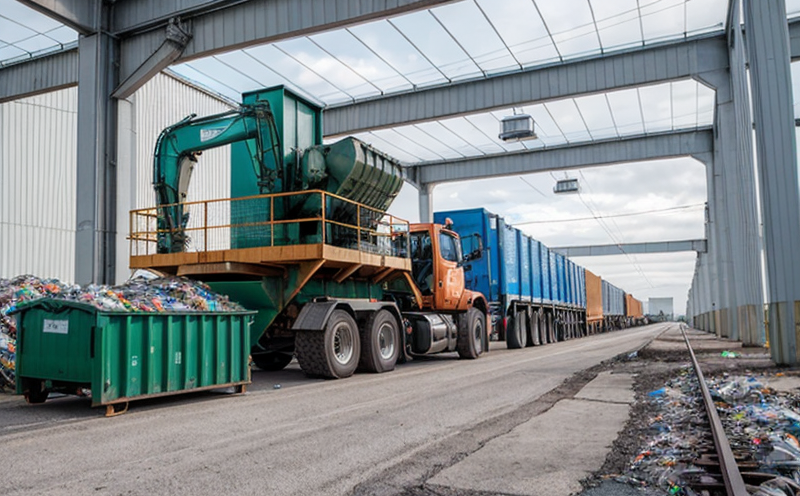ASTM D7209 Textile Recycling and Reuse Testing
The ASTM D7209 standard provides a comprehensive approach to evaluating the suitability of textile waste for recycling. This testing method is essential in ensuring that recycled textiles meet quality standards and are suitable for reuse in various applications, including manufacturing new products, insulation materials, and even automotive padding.
Textile recycling plays an increasingly important role in sustainable industrial practices as part of broader circular economy initiatives. By recycling textile waste instead of disposing of it, we reduce landfill burdens and conserve resources. The ASTM D7209 standard helps manufacturers and recyclers ensure that recycled textiles are fit for purpose, thereby supporting the transition to a more sustainable manufacturing sector.
The testing protocol outlined in ASTM D7209 involves several key steps. Initially, samples of textile waste are collected from various sources. These could include post-consumer garments, industrial waste, or surplus inventory. The specimens must be representative and free from contamination that might affect the test results.
Once prepared, the samples undergo a series of mechanical and chemical tests to assess their suitability for recycling. Mechanical testing evaluates factors such as tensile strength, tear resistance, and flexibility. Chemical analysis is performed to ensure that recycled fibers do not contain harmful substances or residues that could compromise product quality or pose environmental risks.
The ASTM D7209 standard also includes specific criteria for determining the acceptable levels of impurities and degradation in recycled textiles. These thresholds are critical for ensuring that recycled materials meet the quality standards required by end-users, whether they be manufacturers producing new products or companies creating innovative insulation solutions.
Another important aspect of ASTM D7209 is its emphasis on traceability and documentation. Throughout the testing process, detailed records must be kept to demonstrate compliance with all relevant standards. This includes information about sample collection, preparation, test procedures, and results. Such transparency is crucial for maintaining trust in the recycling industry and ensuring that recycled textiles are consistently high quality.
Moreover, ASTM D7209 promotes innovation by encouraging the development of new technologies and processes to enhance textile recycling. By providing a standardized framework, this testing method helps identify potential improvements in recycling techniques and materials, driving the sector towards greater efficiency and sustainability.
In summary, ASTM D7209 is a vital tool for ensuring that textiles can be effectively recycled and reused without compromising quality or safety. Its application supports sustainable practices within industrial manufacturing, helping to build a more circular economy where resources are conserved and waste minimized.
Scope and Methodology
The ASTM D7209 standard defines the procedures for testing textile samples intended for recycling. The scope covers various aspects including sample preparation, mechanical property assessment, chemical analysis, and evaluation of impurity levels. This ensures that recycled textiles are fit for purpose in different industrial applications.
| Test Parameters | Methodology |
|---|---|
| Tensile Strength | Measure the force required to break a specimen under specific conditions. |
| Tear Resistance | Evaluate how much stress can be applied before a tear occurs in the material. |
| Flexibility | Determine the ease with which fabric bends or folds without breaking. |
| Chemical Composition | Analyze for specific chemicals, metals, or other contaminants that might affect quality. |
| Impurity Levels | Evaluate the presence and concentration of impurities that could compromise product integrity. |
The methodology outlined in ASTM D7209 is designed to be rigorous yet practical, allowing for accurate assessment of recycled textiles. This includes detailed instructions on sample preparation, equipment calibration, and data interpretation. Compliance with these standards ensures consistent results across different laboratories, enhancing confidence in the recycling process.
Why Choose This Test
Selecting ASTM D7209 for textile recycling and reuse testing offers numerous advantages over other methods or approaches. Firstly, it provides a standardized framework that ensures consistency and reliability of results across different laboratories. Secondly, the comprehensive nature of this test allows for thorough evaluation of recycled textiles, covering mechanical properties, chemical composition, and impurity levels.
Compliance with ASTM D7209 is crucial for meeting regulatory requirements and gaining market access to certain industries. For example, many manufacturers have stringent quality standards that recycled materials must meet before they can be used in production processes. By adhering to this standard, companies demonstrate their commitment to sustainability and quality.
Furthermore, ASTM D7209 supports innovation by encouraging the development of new technologies and techniques for recycling textiles. The structured approach provided by this standard enables researchers and engineers to identify areas where improvements can be made, leading to more efficient and effective recycling processes.
The test also fosters collaboration among stakeholders in the textile industry. By using a common set of criteria, manufacturers, recyclers, and end-users can work together more effectively towards shared goals. This collaborative environment encourages knowledge sharing and best practice adoption, ultimately benefiting the entire sector.
Lastly, ASTM D7209 contributes to broader sustainability efforts by promoting resource conservation and waste reduction. By ensuring that recycled textiles are of high quality, this standard helps drive demand for recycling programs and supports the transition towards a more circular economy.





